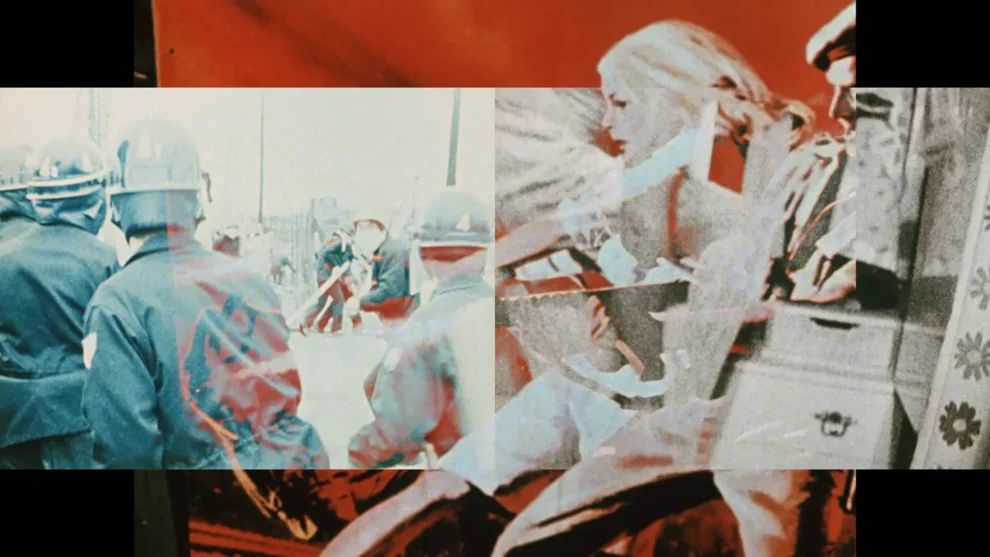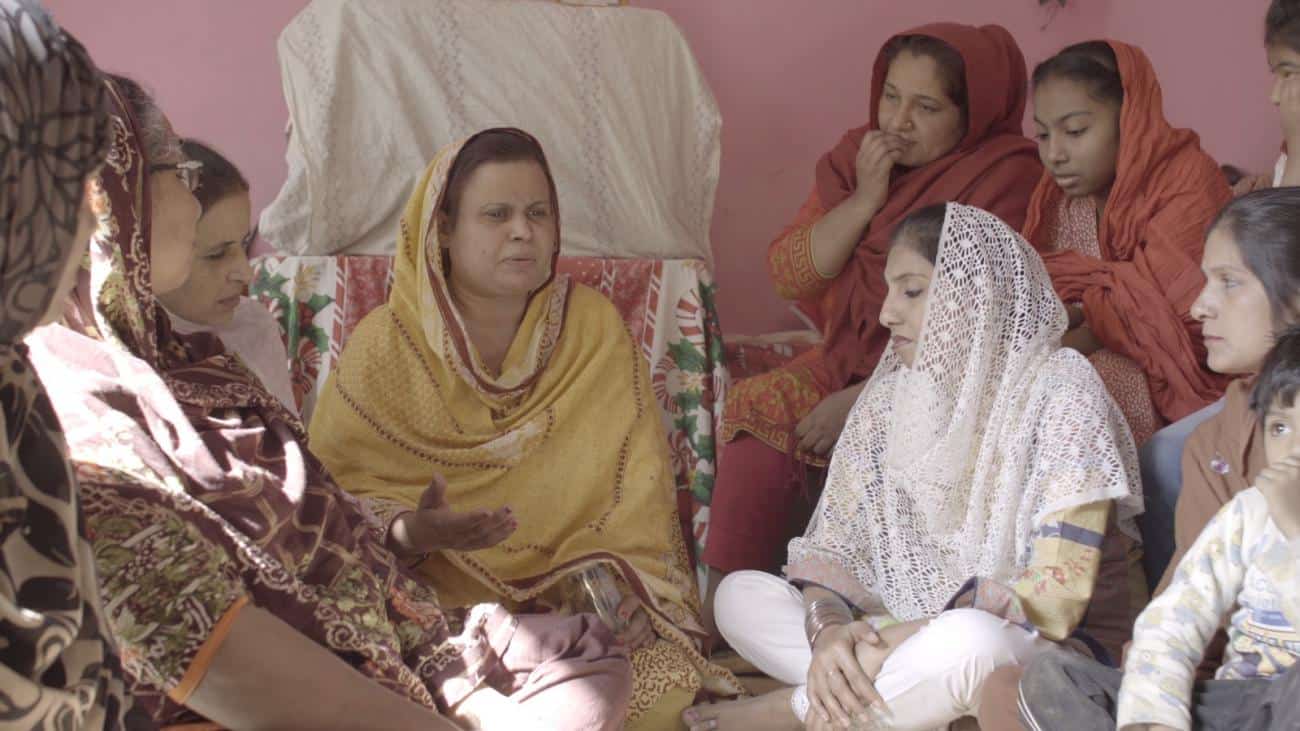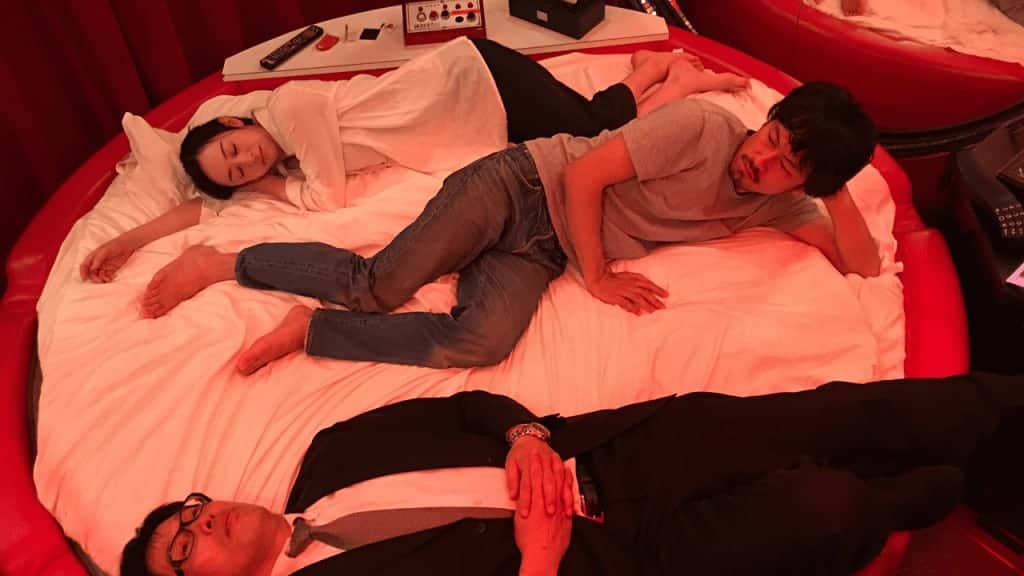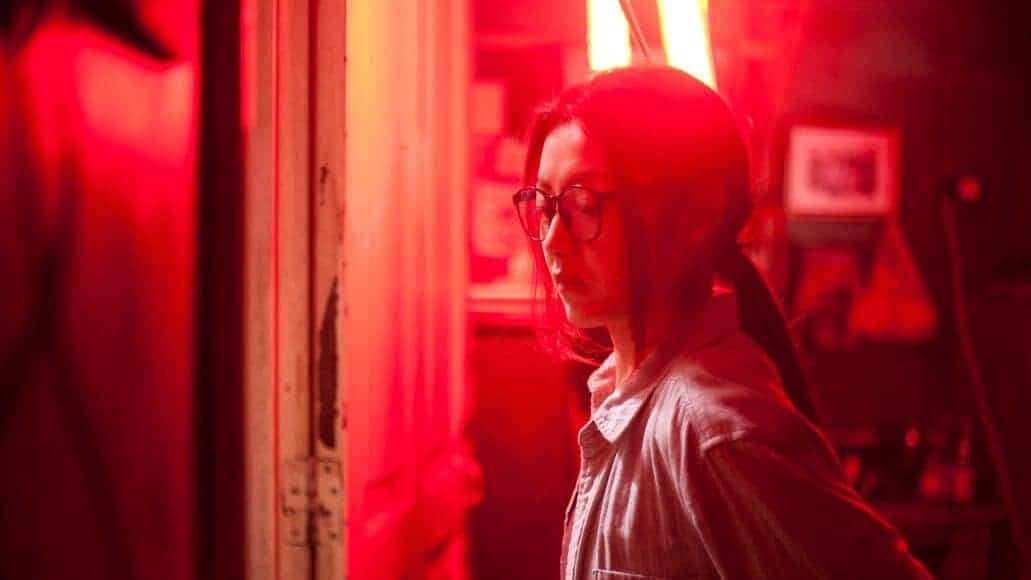As I mentioned before, the Kim Hiro incident and particularly the way it was covered by the media, inspired a number of filmmakers to explore new cinematic methods that would examine the concepts of timeliness and actuality in cinema and the connection between documentary and fiction. Toshio Matsumoto, in a precursor to his feature debut, “Funeral Parade of Roses” came up with a 15-minute short which was presented through three projectors running different images at different speeds simultaneously, in an effort to mimic the visual layout of the newspaper, in a frame split in two that features completely different images.
Among the many images presented in frantic speed here, we have various of Kim Hiro, as the one with his portrait on the left side and newspapers on the right, which is held by an individual taking part in a street performance. Continuing this segment of the film, in which passerby watch several men dressed in business attire being tied in columns, the second screen shows a rapid montage of television ads, photographs of the war in Vietnam, the riot police and the television footage of Kim's hostage crisis, in an effort, as we mentioned in the prologue, to mimic the visual layout of a newspaper.
In an overall dizzying and delirious montage that permeates the whole film, along with noisy music and occasional voices heard throughout,
Matsumoto presents a number of images that seem to have little connection with each other. A number of those involve people dancing at dark clubs under the sounds of American music, as in the case of Aretha Franklin's “Respect”. Photos of nudity and undeskirt shots are juxtaposed with people reading newspapers on the street, close ups of women smoking, while the aforementioned performance takes a significant part of mostly the right part of the screen. The majority of images are in black and white, but occasionally splashes of color do appear, as do letters on screen that pass with thundering speed.
The sound in general seems to follow the same chaotic approach, very rarely having anything to do with what is showing on screen. At times there is also reporting in English, which, is though, juxtaposed with Japanese talking, making quite difficult to discern. Comic strips also appear throughout, mostly of erotic connotations. A woman getting dressed takes a large part of the movie (considering) and is frequently combined with footage of the riot police clashing with students. Repeated images of a malformed embryos also appear repeatedly, with the repetition of images actually being part of the narrative.
Through this rather experimental and unique for the era approach, Matsumoto tries to capture the sensation and actuality of the rather tumultuous 1968, through a mosaic that also resembles that TV format, in the way spectacle and news are combined through it. At the same time, the fact that there is no coherence or any concept of narrative, makes the movie quite difficult to watch. That the whole thing is directly connected with the then topicality of the country adds to this sense. However, the value of “For the Damaged Right Eye” lies in the presentation of the roots of where Matsumoto's work in cinema begun and how a “trend” that also involved Nagisa Oshima among others started, as much as a style of experimental cinema that is actually prevalent even today, even if in ‘calmer' approaches.
















